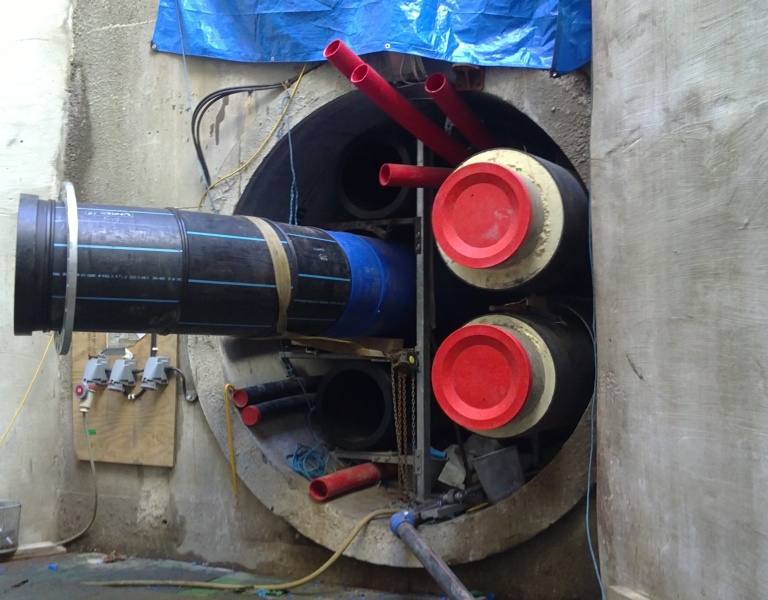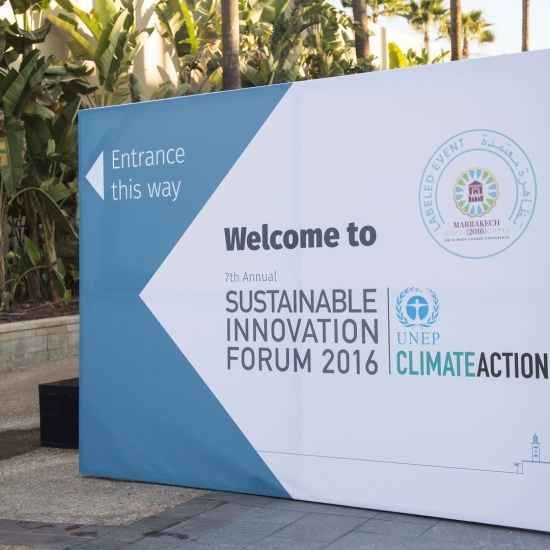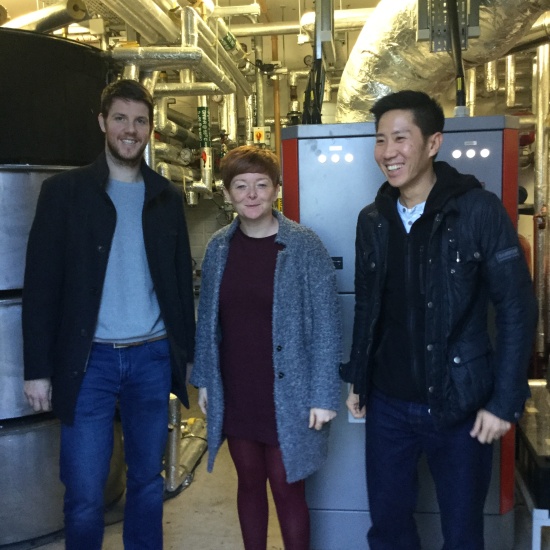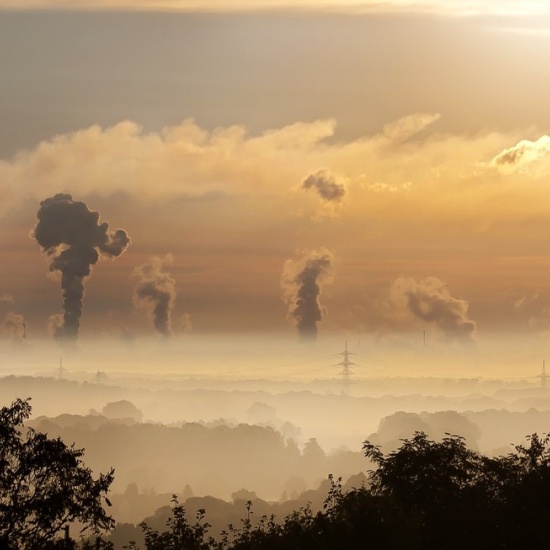Developing District Heating in Ireland
Imagine life without fear of leaving on the immersion? Guest blogger, Donna Gartland, Executive Energy Planner with Codema - Dublin's Energy Agency, writes about how Ireland needs to start looking to sustainable alternatives like district heating.

Ireland are currently struggling to meet EU 2020 Renewable Energy targets, especially in the heating sector. With the focus now on non-ETS CO2 emissions to 2030, its time to learn from our European neighbours and start looking to sustainable alternatives to heat our buildings.
When the 'Beast from the East' stopped us in our snowy tracks recently, most of us fired up our gas or oil boilers, lit our fires, or put the electric storage heating on full blast. Aside from the inconceivable horror of losing internet connection or running out of precious commodities like bread, we all prayed the power wouldn't go down, we wouldn't run out of oil or briquettes, the boiler wouldn't break down and there would be no disruption to gas supplies. After all, there are only so many back-up heating systems we can have in our own homes.
Technology is strange, when you're a stranger
District heating is definitely a foreign concept to us Irish. For those who have heard of such heating systems, they think of places like Eastern Europe or cities like Copenhagen and Stockholm, which have huge district heating schemes serving millions of customers. These systems have played a key role in making these cities some of the most sustainable cities in the world, while also lowering costs for customers. District heating is one of the oldest methods of heating buildings and delivers 9% of Europe's total heating demands. In certain countries like Denmark, it delivers 60% of their heating demands.
So, what is district heating all about, and why haven't we heard more about it?
District heating systems deliver heat for both space heating and water heating needs to buildings through a network of insulated underground pipelines. In much the same manner as electricity is delivered to our homes and businesses, energy in the form of heat is produced centrally in large plants and delivered through the district heating network. The usage is then metered at each building. And crucially, just like the electricity network, district heating networks are completely fuel agnostic, as they can be driven by all manner of heating. This is good news for driving competitive heating costs, for security of supply, and importantly for low carbon heat.
Because the pipelines are underground, they are less likely to be affected by any storms. If the power goes down, heat can still be delivered to your home. District heating providers invest in back-up heat supply systems so you don't have to, and ensure customers are supplied with heat even in the worst winter weather.
The elephant in the room - Recoverable Heat
Everyone knows the best way to eliminate needless waste is to reduce, reuse, recycle. So, why aren't the same principles applied to the energy system? When producing electricity, around 60% of energy is lost during transformation, and the majority of that waste is in the form of heat. When you see those white clouds puffing out of the chimney stacks of power stations and industry, this is commonly called 'smoke', but it is in fact mostly steam. If we are to follow the same principles as in the waste reduction cycle, we must first reduce our energy use and make production more efficient, then we reuse and recycle. This means we should be using recoverable heat as a priority. Only where this is not possible should we think about using any other valuable and finite resources. Recoverable or 'waste' heat is an unavoidable by-product of thermal power production and many large industries. Instead of utilising this heat, it is dumped into sea, rivers and through chimney stacks; literally disappearing into thin air. Why look to extract and burn more fuel when this energy is staring us right in the face! And the best thing about this source of energy? It is zero carbon, indigenous and practically free!
It is estimated that there is currently enough waste heat from power production in Europe to meet ALL of Europe' heat demands. The same study shows that Ireland has enough waste heat to meet more than 30% of the country's total heating needs. Codema, Dublin's energy agency, estimates that there is enough waste heat from existing power stations alone in Dublin City to meet nearly half of the capital's heat demand. In Sweden, 97% of their district heating supply is either renewable or recovered heat, and most of their cities and towns have district heating supply. The Swedish district heating systems prioritise the use of heat recovery, not just because it reduces emissions, but because it reduces costs. Swedish district heating prices are competitive with other forms of heating, hence the high customer connection rates.
The high energy cost (and waste) of data centres
Data centres are a hot topic (no pun intended) at the moment, for two reasons; their growth levels and their vast use of electricity. A very interesting recent study on data centres, supported by the SEAI, shows that in 2016, data centres consumed 4.8% of Ireland's total electricity demand, and this is set to more than double by 2024. Nearly all of the energy that goes into a data centre for cooling comes out the other side as warm air. In France and Denmark, there are already examples of data centre heat recovery which is used to heat homes, offices and swimming pools. If we can take advantage of the data centres locating to Ireland and utilise their heat, we can supply low cost and low-carbon heat, making data centres more sustainable. Why let so much of the renewable electricity being fed to data centres go to waste as an unused by-product?
Did you turn off the immersion?
As well as decreasing the use of fossil fuel imports (on which Ireland is heavily reliant) and decreasing carbon emissions, there are many other benefits of using district heat for customers. Imagine a life where, no matter how many teenage children or flat-mates you have, there will always be hot water on demand, whenever you need it. Imagine not needing to wait for your hot water to heat up before you shower and head out for that last minute night out. The extra storage space you could have if you didn't need a hot press or hot water tank in your home. With no risk of carbon monoxide leaks, no alarms are needed and your family is safer. You are also safe from the sheer panic that takes hold when you think you may have left the immersion on.
District heating offers all of this and more, such as little or no maintenance of heating equipment, security against fuel price fluctuations, and no deliveries or storage space needed for oil or biomass. To top it all off, district heating offers very competitive prices as it can use many different low cost sources of heat, meaning customers can save a lot of money too.
Taming the Beast from the East with technology from the North!
Scandinavian countries like Denmark, because of their history of developing District Heating (DH) nationally since the 1970s, are leading the way in terms of future proofing and innovation, and are now rolling out what are termed 4th generation DH systems. 4th generation systems involve delivering hot water at lower temperatures to new and retrofit low energy buildings whilst integrating the heating and electricity markets to create mutual benefits. Lower temperatures mean lower losses, and means more sources of low cost and low energy heat become viable to use. District heating is the perfect low cost storage partner for renewable electricity; when renewable electricity generation is high and cheap, turn on large scale heat pumps, when it is low, turn on the CHP plant, and if there's no heat demand at those times, store it in a cheap large scale thermal storage tank for later. The product of these innovations are even lower losses, higher efficiencies, more renewable energy, higher security of supply and lower costs to customers. And the advantage for Ireland is, we don't have to start at 1st generation district heating, we can learn lessons from the Scandinavians and go straight to 3rd and 4th generation.
Many new high density developments are being planned in our cities to meet growing housing and commercial needs. This, coupled with the need to decarbonise the heating system, is the perfect opportunity for researchers, SMEs and public sector to collaborate to find ways to apply innovative district heating solutions to the Irish situation.
Here comes the science (and funding) bit...
It can be very difficult to find funding to demonstrate new technologies in new markets, and to research new energy topics when there are no established industry groups to fund the work. At Codema, where I work, we have been researching the technical and economic potential and market barriers for district heating in Ireland. We do this to facilitate the Dublin local authorities with planning and implementing district heating schemes in the Dublin region. We have collaborated with both public and private companies to take advantage of the funding available from the EU and the SEAI's Research, Development and Demonstration (RD&D) funding stream. Examples of this work include the Guide to District Heating in Ireland and the Spatial Energy Demand Analyses for local authorities, which were granted funding through this SEAI programme in recent years. Codema are also leading an €11m European Interreg North-West Europe project called HeatNet, which has secured funding for six high-tech district heating pilots across Europe. This includes a pilot demonstration site for South Dublin County Council which will utilize waste heat and be the first of its kind in Ireland and the UK.
There is a lot still to do to and research to be undertaken in order to break down the barriers to the roll out of low carbon district heating in Ireland.
Author biography
Donna Gartland is Executive Energy Planner at Codema - Dublin's Energy Agency, and is responsible for Energy Planning and Policy. She is technical advisor for Codema on the €11.5m Interreg North-West Europe project HeatNet, which aims to overcome barriers and advance 4th generation district heating. Donna is also a director of the newly formed not-for-profit Irish District Energy Association, which aims to promote the use of district heating and cooling in Ireland. Donna holds an MSc in Sustainable Energy Planning and Management from Aalborg University Denmark, and is currently a PhD researcher in University College Cork's Energy Policy and Modelling Group.


